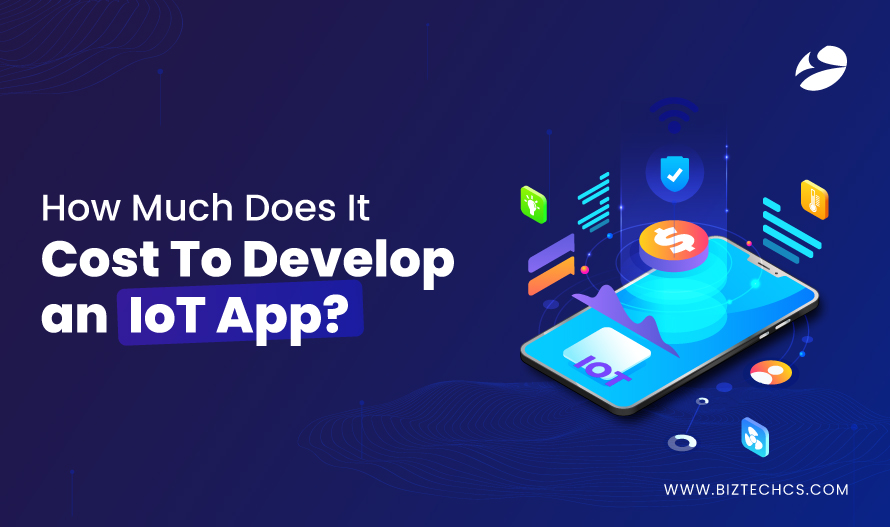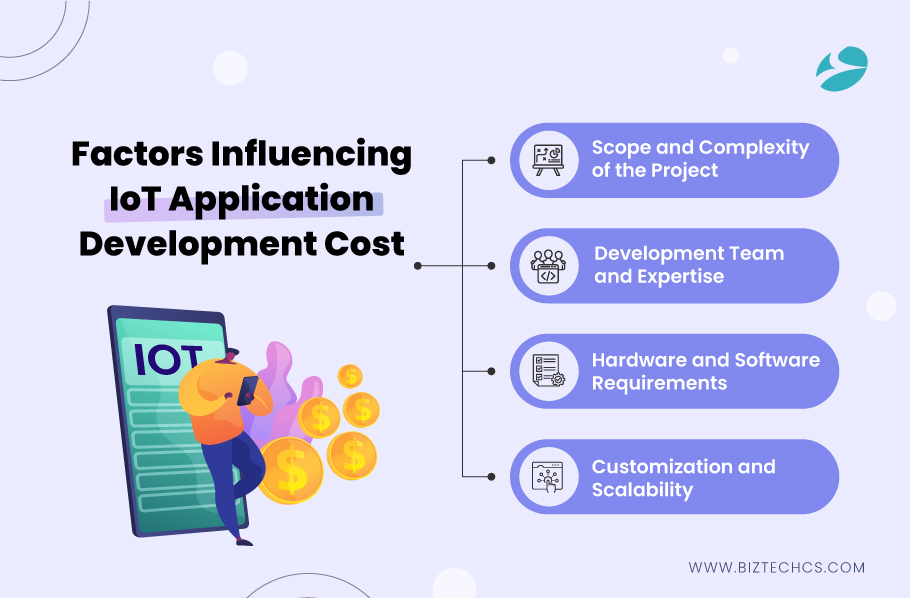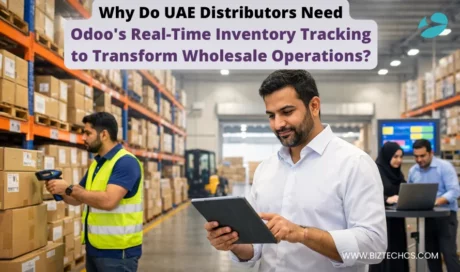How Much Does It Cost to Develop an IoT App in 2025?
12 min read
12 min read
Table of Content

The Internet of Things is a concept connecting our devices to the internet and changing how people live and work.
As the usage of IoT applications rises, companies are turning to this technology. It is essential to understand the fundamental cost determinants when developing an IoT app. The goal of this blog is to discuss these cost factors.
The IoT application development services market was worth more than $300 billion in 2023. This growth underlines the need to learn about IoT platform pricing and custom IoT app development. It will help IoT app development companies and those looking for IoT mobile app development services.
 1. Scope and Complexity of the Project
1. Scope and Complexity of the Project
The size and scale of the project define the price of developing a mobile application for IoT solutions.
If you are planning an app for business, the more complex the functionality and the connectivity, the higher the price tag will be.
This implies that custom app developers are likely to encounter several factors- including data security, user interface, and connectivity – that would cost IoT device management more.
Hence, it is clear that the larger and more complex a particular project is, the higher the app development cost tends to be.
2. Development Team and Expertise
The cost of creating an app is mainly driven by the development team and its expertise, especially in developing IoT applications.
Skilled custom app developers bring essential knowledge and experience, ensuring the app development for business runs smoothly and efficiently.
However, senior developers usually claim more fees, adding to the overall cost of IoT device management solutions. You should be able to balance your team’s expertise level and the amount of money you will have to spend.
3. Hardware and Software Requirements
The cost of developing an app depends on the necessary hardware and software, even for IoT applications.
Substantial expenses might be incurred due to the intensity and number of IoT devices requisite and the software required to develop business applications.
The costs for managing IoT devices are also an important aspect that custom app developers must incorporate into the pricing, where issues concerning connectivity, storage, and security are included.
This understanding aids in benchmarking actual development costs when designing a functional and efficient IoT application.
4. Customization and Scalability
When it comes to the cost of creating an app for IoT applications, factors like customization and scalability are also vital players.
A custom app can only be developed according to the requirements of the particular business, which involves additional expenses.
Secondly, as the business scales up, the application requires IoT devices and data volumes, which affects IoT device management costs.
Hence, the development of apps for businesses within the IoT category should be speculative to facilitate initial customization but with the flexibility for further developments in the future.
 1. Initial Consultation and Requirement Analysis
1. Initial Consultation and Requirement Analysis
During the first preliminary consultation and requirements gathering step, one meets with clients to identify their precise needs and objectives of the IoT application.
This stage involves feasibility analysis that determines a project’s potential to meet initial expectations and targets regarding scope, target user, and technical considerations.
This phase also entails developing a project schedule and cost estimates. Fees for consultations range from $5,000 to $10,000 for simple consultations or consultations lasting only a few weeks.
It also helps to set up a clear and detailed set of requirements to prevent the project scope from drifting in a way that involves more work than was initially intended or everyone from being on the same page about what was agreed upon.
All the following activities can be considered as built during this phase as they form the framework for the remaining work that will be done.
2. Design and Prototyping
The basic concepts and specifications are converted into visual and working models in the design and prototyping stage.
The UI/UX designers make wireframes and mockups to show what the user interface and user experience will be like.
Prototyping tools are used to model interfaces and applications that can be used for evaluation by the target end-users.
The costs for this phase typically fall within the range of $10,000 to $20,000, depending on the levels of details and number of loops.
Positive feedback is then captured to ensure the proposed design meets the expected feedback and the technical implementation. This phase assists in envisioning the final result and making necessary revisions before the development stage.
3. Development and Integration
This phase involves developing the IoT application code, implementing the necessary backend platforms, and installing the required hardware.
Software developers are responsible for translating design specifications into code, while engineers focus on integrating sensors, devices, and networks.
It also involves defining interfaces between the various elements in the form of APIs for inter-communication. Depending on project requirements and size, costs may range from $50,000 – $200,000 to several hundred thousand dollars or more.
Regular updates and progress reports are the key to monitoring and comparing the project’s progress with the plan. This phase can give the application functionality to make it ready for testing.
4. Testing and Quality Assurance
Testing and quality assurance (QA) ensure that the IoT application is efficient, safe, and effective in performing the intended purpose.
The functions of a QA Engineer include unit testing, integration testing, system testing, and user acceptance testing. This phase also aims at removing bugs, security loopholes and other performance flaws.
Comprehensive testing may cost anywhere between $15000 and $30000, depending upon the type and level of testing envisaged.
Test results documentation and fixes records are effectively kept. Maintaining quality standards in this phase is important to develop a solid, effective application.
5. Deployment and Maintenance
The last phase is the deployment and maintenance phase, which involves deploying the IoT application and providing constant support to ensure it is running as expected.
This involves installing the application in a productive environment, performing analysis, and implementing updates and fixes.
Implementation and acquisition costs may range between $10,000 and $20,000, while monthly operating or maintenance costs could be between $5,000 and $15,000. Since problems after the launch are closely monitored, addressing them is easier.
Updates are crucial to enhancing the app’s performance, security features, and user experience. This phase helps to make the application relevant throughout its use and development.
1. Training and Onboarding
Training and onboarding are essential but neglected expenses while creating an IoT application.
Employees must learn new devices, software, and processes, which entails time and money.
Whether online or face-to-face, training sessions are costly and can cost from a few hundred dollars to thousands of dollars per employee.
Moreover, the time the employees spend learning is wasted in not being productive.
Onboarding also entails costs in documentation, training aids, and, in some cases, hiring trainers outside the organization.
These are necessary initial expenses that will help avoid many costly mistakes when deploying the IoT system.
2. Regulatory Compliance
When creating an IoT application, many regulatory standards and guidelines must be followed, often at an additional cost.
Laws and policies also differ depending on the industry and the location, affecting data protection, privacy, and compatibility between devices.
Legal advice, assessments, and sometimes even redesigning the application to conform to particular standards all fall under compliance.
These processes can increase costs, sometimes reaching tens of thousands of dollars, especially where the organization operates in highly specialized fields such as health or finance.
Failure to adhere can attract massive penalties and lead to loss of reputation for the company in question.
Hence, it is important to keep abreast with the changes in the regulations and ensure that they are incorporated into the process.
3. Updates and Upgrades
It is critical to note that overseeing an IoT application once deployed entails constant updating and upgrading to counter any threats and malfunctions.
Since security patches are crucial for preventing vulnerabilities, resources must be devoted to monitoring and developing security continuously.
Additional components may also be necessary for enhancing the capabilities or the speed of the device, which in return means more time and money spent on the upgrade.
These ongoing costs can sometimes exceed the initial development budget as technology and user requirements evolve rapidly.
The consequence of neglecting such updates includes various system malfunctions, data leakage, and erosion of trust from users.
Therefore, a fixed budget must be allocated towards the constant enhancement of the application to achieve sustained success.
In conclusion, several aspects impact the cost of the IoT app, including its complexity, the number of features, and the price of the chosen IoT platform.
Understanding application development cost assists in the right budget planning. Custom IoT app development usually involves the creation of unique business-specific applications so that the created app will be ideal for your business.
IoT software development services offer the necessary skills needed to help make your dream app a reality.
It is worthy of note that engaging the services of skilled IoT development services guarantees a streamlined development process.
The cost of developing an app may differ depending on the situation, although high-quality IoT app development can pay off for your organization.
So, if you are interested in IoT application development, we can help you. Our development team has rich experience developing IoT apps for different business domains to achieve the best results for businesses.
Various factors, such as the complexity of the custom IoT application, the size of the scale of IoT devices to be connected, the selection of hardware and software platforms, and security concerns also play great roles in cost. Further expenses may include maintenance of the space, storage, and archiving of data, and compatibility issues with other systems.
The costs associated with IoT application development include one-time and other expenses such as application development, hardware device costs, software licensing costs, integration costs, and application maintenance and support.
Yes, you can start developing an IoT application with a limited amount of money and scale up when the need arises, adding new features and connected devices.
Developing IoT applications can involve various additional costs, including data storage, hardware malfunction, software upgrades, license agreements, and other overall costs.
When selecting a custom IoT application development company, you must consider its previous work, comprehensive approach, experience in both hardware and software development, and whether it offers support after the completion of a project.

Artificial Intelligence (AI)
16
By Biztech Editor

Artificial Intelligence (AI)
80
By Nandeep Barochiya

Odoo
131
By Uttam Jain